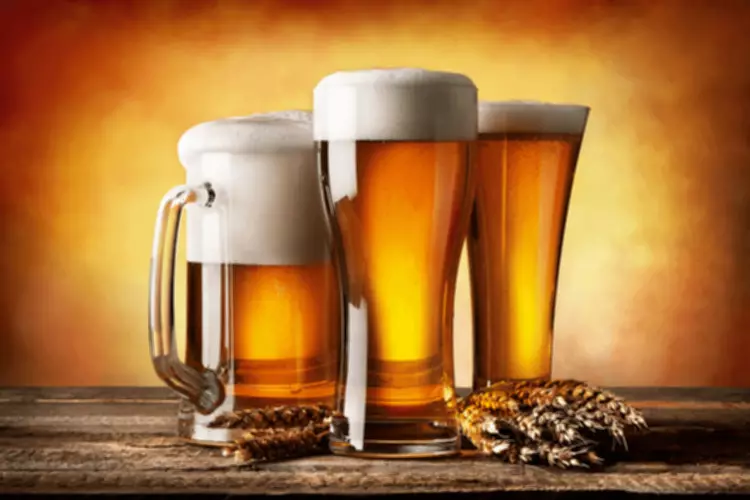
Subsequently, the therapist can address each expectancy, using cognitive restructuring (which is discussed later in this section) and education about research findings. The therapist also can use examples from the client’s own experience to dispel myths and encourage the client to consider both the immediate and the delayed consequences of drinking. Marlatt and Gordon (1980, 1985) have described a type of reaction by the drinker to a lapse called the abstinence violation effect, which may influence whether a lapse leads to relapse. This reaction focuses on the drinker’s emotional response to an initial lapse and on the causes to which he or she attributes the lapse. People who attribute the lapse to their own personal failure are likely to experience guilt and negative emotions that can, in turn, lead to increased drinking as a further attempt to avoid or escape the feelings of guilt or failure. In contrast to the former group of people, the latter group realizes that one needs to “learn from one’s mistakes” and, thus, they may develop more effective ways to cope with similar trigger situations in the future.
How euphoric recall and fading effect bias can create a false sense of control.
- It was noted that in focusing on Marlatt’s relapse taxonomy the RREP did not comprehensive evaluation of the full RP model [121].
- Below is a description of several of these tools, including information about how to access them and limitations.
- Rather than only focusing on the end goal, celebrate small victories and all positive steps you’ve taken thus far.
These findings support that higher distal risk can result in bifurcations (divergent patterns) of behavior as the level of proximal risk factors increase, consistent with predictions from nonlinear dynamic systems theory [31]. A basic assumption is that relapse events are immediately preceded by a high-risk situation, broadly defined as any context that confers vulnerability for engaging in the target behavior. Examples of high-risk contexts include emotional or cognitive states (e.g., negative affect, diminished self-efficacy), environmental contingencies (e.g., conditioned drug cues), or physiological states (e.g., acute withdrawal).
Cognitive Behavioral Therapy for Substance use Disorders
This perspective considers lapses key learning opportunities resulting from an interaction between coping and situational determinants, both of which can be modified in the future. This reframing of lapse episodes can help decrease the clients’ tendency to view lapses as the result of a personal failing or moral weakness and remove the self-fulfilling prophecy that a lapse will inevitably lead to relapse. Another approach to preventing relapse and promoting behavioral change is the use of efficacy-enhancement procedures—that is, strategies designed to increase a client’s sense of mastery and of being able to handle difficult situations without lapsing.

Factors That Contribute To The Abstinence Violation Effect
Some clients may find it challenging to identify their strengths or may say that they don’t have any. Counselors can ask these clients how they have overcome adversity in the past, and how they have previously managed problematic substance use. Counselors can also reframe as potential strengths what these clients—and the counselors themselves—may think of as deficits. As part of providing recovery-oriented counseling, counselors need to understand the concept of recovery capital and incorporate it into their practice by working with clients seeking recovery to help them identify, access, and build their own recovery capital. Chapter 4 contains an indepth discussion of resources that are available to individuals in recovery to help them meet their personal needs in areas such as health care, affordable housing (e.g., Housing First), nutrition, employment, and social connection.
- The results reported in the RREP study indicate that the original relapse taxonomy of the RP model has only moderate inter-rater reliability at the highest level of specificity, although reliability of the more general categories (e.g., negative affect and social pressure) was better.
- One study, in which substance-abusing individuals were randomly assigned to RP or twelve-step (TS) treatments, found that RP participants showed increased self-efficacy, which accounted for unique variance in outcomes [69].
- Therefore, one global self-management strategy involves encouraging clients to pursue again those previously satisfying, non-drinking recreational activities.
- However, among individuals with severe SUD and high-risk drug or alcohol use, the urgency of reducing substance-related harms presents a compelling argument for engaging these individuals in harm reduction-oriented treatment and interventions.
When people don’t have the proper tools to navigate the challenges of recovery, the AVE is more likely to occur, which can make it difficult to achieve long-term sobriety. As a result, the AVE can trigger a cycle of further relapse and continued substance use, since people may turn to substances as a way to cope with the emotional distress. RP has also been used in eating disorders in combination with other interventions such as CBT and problem-solving skills4. One of the most notable developments in the last decade has been the emergence and increasing application of Mindfulness-Based Relapse Prevention (MBRP) for addictive behaviours. Our memory is like a playlist—only the favorite songs get replayed, leaving out the ones less liked. If I asked you about your past drinking experiences, you’d likely recall the bonding moments or numbing relaxation rather than the drunk argument and frequent blackouts.
Is a Relapse Dangerous?
(b) Restrained eaters whose diets were broken by a milkshake preload showed increased activity in the nucleus accumbens (NAcc) compared to restrained eaters who did not consume the preload and satiated non-dieters [64]. Another example is Taylor, who has been doing a wonderful job taking walks and engaging in healthier eating. Taylor uses an app to watch her intake of calorie limit and does see positive outcomes to her new lifestyle. 3The key relapse episode was defined as the most recent use of alcohol following at least 4 days of abstinence (Longabaugh et al. 1996). 1Classical or Pavlovian conditioning occurs when an originally neutral stimulus (e.g., the sight of a beer bottle) is repeatedly paired with a stimulus (e.g., alcohol consumption) that induces a certain physiological response.
Counselors can also help clients identify goals and objectives that will help them avoid a recurrence. The https://ecosoberhouse.com/ (AVE) occurs when an individual, having made a personal commitment to abstain from using a substance or to cease engaging in some other unwanted behavior, has an initial lapse whereby the substance or behavior is engaged in at least once. The AVE occurs when the person attributes the cause of the initial lapse (the first violation of abstinence) to internal, stable, and global factors within (e.g., lack of willpower or the underlying addiction or disease). Findings concerning possible genetic moderators of response to acamprosate have been reported [99], but are preliminary.
Cognitive Factors in Addictive Processes

Alternatively, researchers who conduct trials in community-based treatment centers will need to obtain buy-in to test nonabstinence approaches, which may necessitate waiving facility policies regarding drug use during treatment – a significant hurdle. When a client experiences a recurrence, it may be time to bolster or update their treatment or recovery plan and goals and reevaluate their need for other support services. Through an examination of triggers, coping strategies, warning signs, and motivation, the counselor and the client can explore revising the plan. Updates abstinence violation effect may include additional strategies for managing thoughts, urges, and impulses related to problematic use.664 Other revisions may include starting or increasing attendance at mutual-help meetings, participating in more recreational activities, and initiating or expanding delivery of peer support services. Two publications, Cognitive Behavioral Coping Skills Training for Alcohol Dependence (Kadden et al., 1994; Monti, Kadden, Rohsenow, Cooney, & Abrams, 2002) and Cognitive Behavioral Therapy for Cocaine Addiction (Carroll, 1998), are based on the RP model and techniques.
1. Nonabstinence treatment effectiveness

Broadly speaking, there are at least three primary contexts in which genetic variation could influence liability for relapse during or following treatment. First, in the context of pharmacotherapy interventions, relevant genetic variations can impact drug pharmacokinetics or pharmacodynamics, thereby moderating treatment response (pharmacogenetics). Second, the likelihood of abstinence following a behavioral or pharmacological intervention can be moderated by genetic influences on metabolic processes, receptor activity/expression, and/or incentive value specific to the addictive substance in question. Third, variants implicated in broad traits relevant for addictive behaviors–for instance, executive cognitive functioning (e.g., COMT) or externalizing traits (e.g., GABRA2, DRD4)–could influence relapse proneness via general neurobehavioral mechanisms, irrespective of drug class or treatment modality.

 No products in the cart.
No products in the cart.